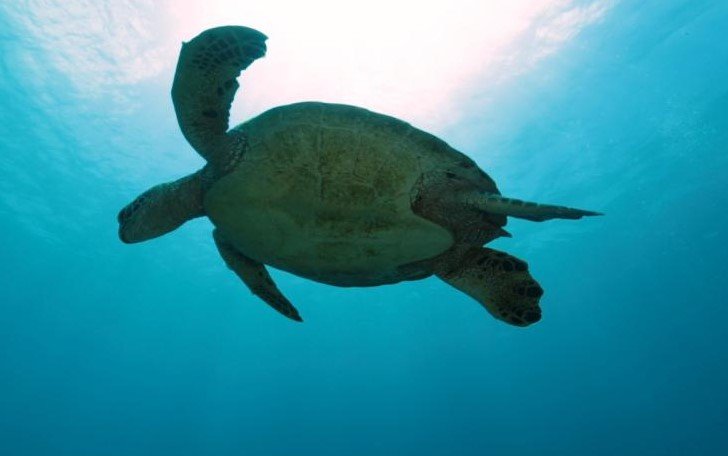After months of rehab in Connecticut, endangered sea turtles return to the Atlantic from Jekyll Island
On a sunny Wednesday in April, as beachgoers soaked up the spring break vibes on Georgia’s golden coast, something remarkable happened just down the shoreline. A quiet, cheering crowd watched as 22 juvenile sea turtles, once frozen in Cape Cod’s unforgiving waters, made their slow but steady return home—to the Atlantic Ocean.
The release happened April 10 off Jekyll Island, thanks to a coordinated effort between Mystic Aquarium’s Animal Rescue Program in Connecticut and the Georgia Sea Turtle Center. And while the crowd may have included spring tourists, these weren’t your usual beach arrivals.
How a Massachusetts Chill Froze Them in Their Tracks
Back in the fall of 2024, water temperatures in Cape Cod Bay suddenly dipped below 50 degrees Fahrenheit. For humans, chilly. For sea turtles? Deadly.
The 22 turtles—14 green sea turtles, six loggerheads, and two Kemp’s ridley sea turtles—had gotten stuck in Cape Cod’s hooked bay, unable to swim out fast enough before the temperatures tanked.
They were cold-stunned. Literally frozen in time.
“These turtles go into a hypothermic state,” said Sarah Callan, program manager at Mystic Aquarium. “Heart rate slows. Breathing slows. They become confused, lethargic, even paralyzed in the water.”

Callan says the geography of Cape Cod works against these young turtles. “The bay traps them,” she said. “And with climate change? It’s getting worse. More rapid drops in temperature. Stronger winds. Faster currents. They just can’t get out.”
From Crisis to Care: How Sea Turtle Rehab Actually Works
Rehabilitation isn’t just a warm bath and a pat on the shell. It’s months of hands-on work. And it starts with a triage unit hundreds of miles north.
The New England Aquarium in Boston first receives the cold-stunned turtles. Marine vets assess who can be saved. Those who make the cut are stabilized and shipped off—often two hours away—to Mystic Aquarium in Connecticut.
What happens next?
-
Temperatures are carefully raised to the mid-70s over time
-
Food is reintroduced slowly—think leafy greens and soft seafood
-
Weak turtles are floated on foam surfboard cutouts until they can swim again
“They look like tiny surfers,” Callan said, smiling. “It’s adorable, but also heartbreaking. Some are too weak to lift their heads. We keep them afloat so they don’t drown while regaining strength.”
A Return to the Wild, but Not Without Worry
By spring, these 22 were strong enough. Healthy enough. Feisty enough. They were cleared for release and prepped for a road trip south.
From snowy New England to sunny Georgia, they traveled in specially outfitted trucks to Jekyll Island.
And there, with the tide coming in and waves gently slapping the sand, they crawled back to the sea—some slow, others sprinting.
But it’s never just a happy ending.
Out of sight doesn’t mean out of danger.
-
Predators still lurk
-
Plastic pollution is rampant
-
Climate change is making ocean life more unpredictable
The two Kemp’s ridleys—among the most critically endangered sea turtles in the world—face especially tough odds. But every turtle counts. Every single one.
Why Jekyll Island?
Georgia might seem like an unusual place for a turtle release from Connecticut. But it’s not.
Jekyll Island is home to the Georgia Sea Turtle Center, a longtime partner with Mystic Aquarium. Its mild coastal waters are prime real estate for young turtles learning to feed and fend for themselves.
There’s history here too. Georgia’s barrier islands have long served as safe havens for nesting sea turtles.
Plus, there’s a science behind the match. Wildlife teams tag each released turtle and track their movements using satellite data. These aren’t just feel-good stories—they’re part of an ongoing scientific effort to understand turtle migration and survival in a changing climate.
Here’s how the species stack up:
| Turtle Species | Released Count | Conservation Status |
|---|---|---|
| Green Sea Turtle | 14 | Endangered |
| Loggerhead Turtle | 6 | Threatened |
| Kemp’s Ridley | 2 | Critically Endangered |
A Flash of Hope in a Warming World
One sentence here. Because we need to pause.
There’s a bigger story behind this moment—climate change is pushing ecosystems to their edge.
Warmer oceans, colder snaps, weird wind shifts—none of it is great for sea turtles. And this year’s cold-stun season in Cape Cod was longer, stronger, and deadlier than most.
That’s the new normal, says Callan. “We used to get a handful. Now? Hundreds show up cold-stunned every fall.”
And with juvenile turtles being the most impacted, it’s a grim sign for future generations.
Still, for 22 of them, there was another chance.
Because someone cared. Because scientists showed up. Because volunteers cut foam surfboards. Because kindness still matters.
